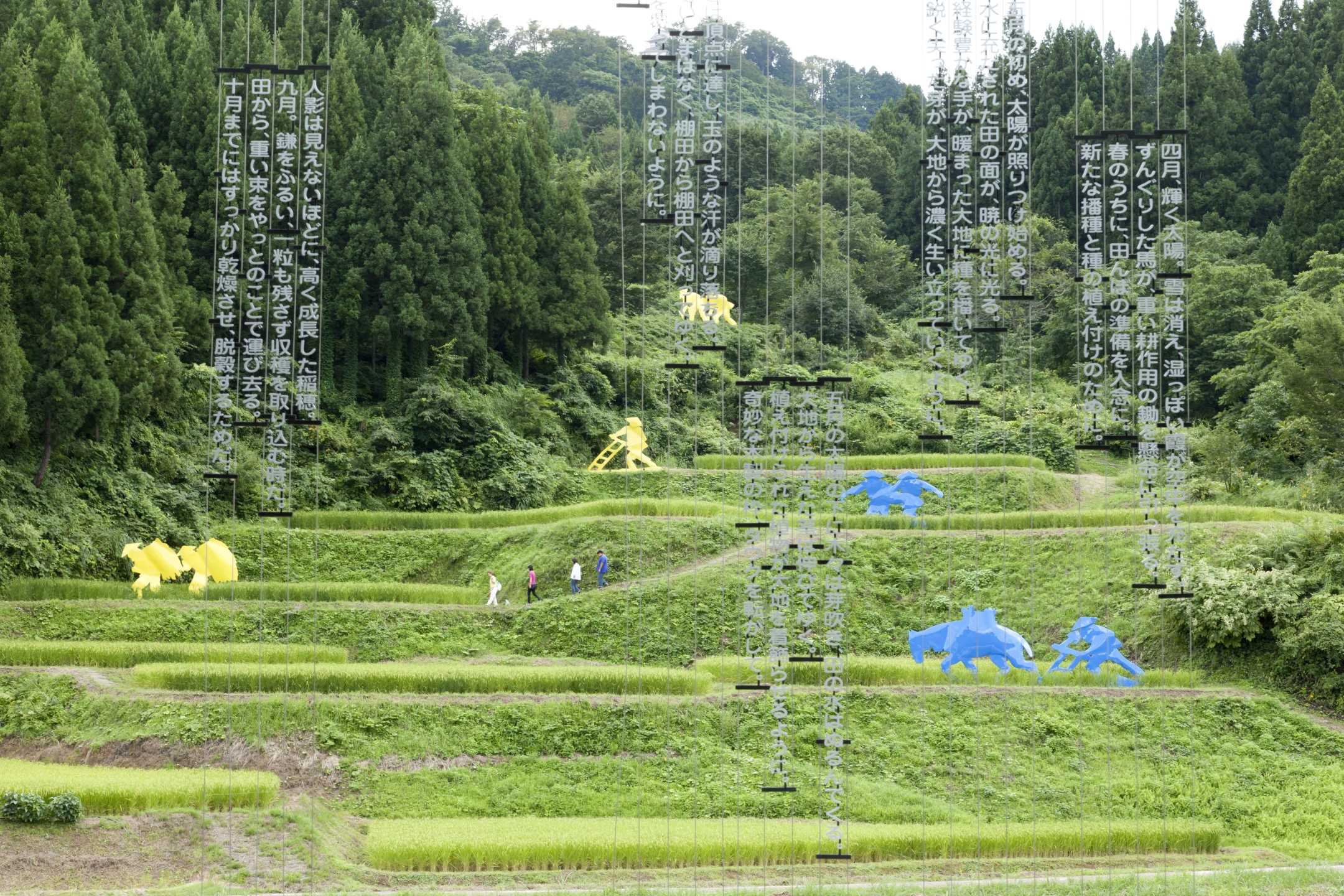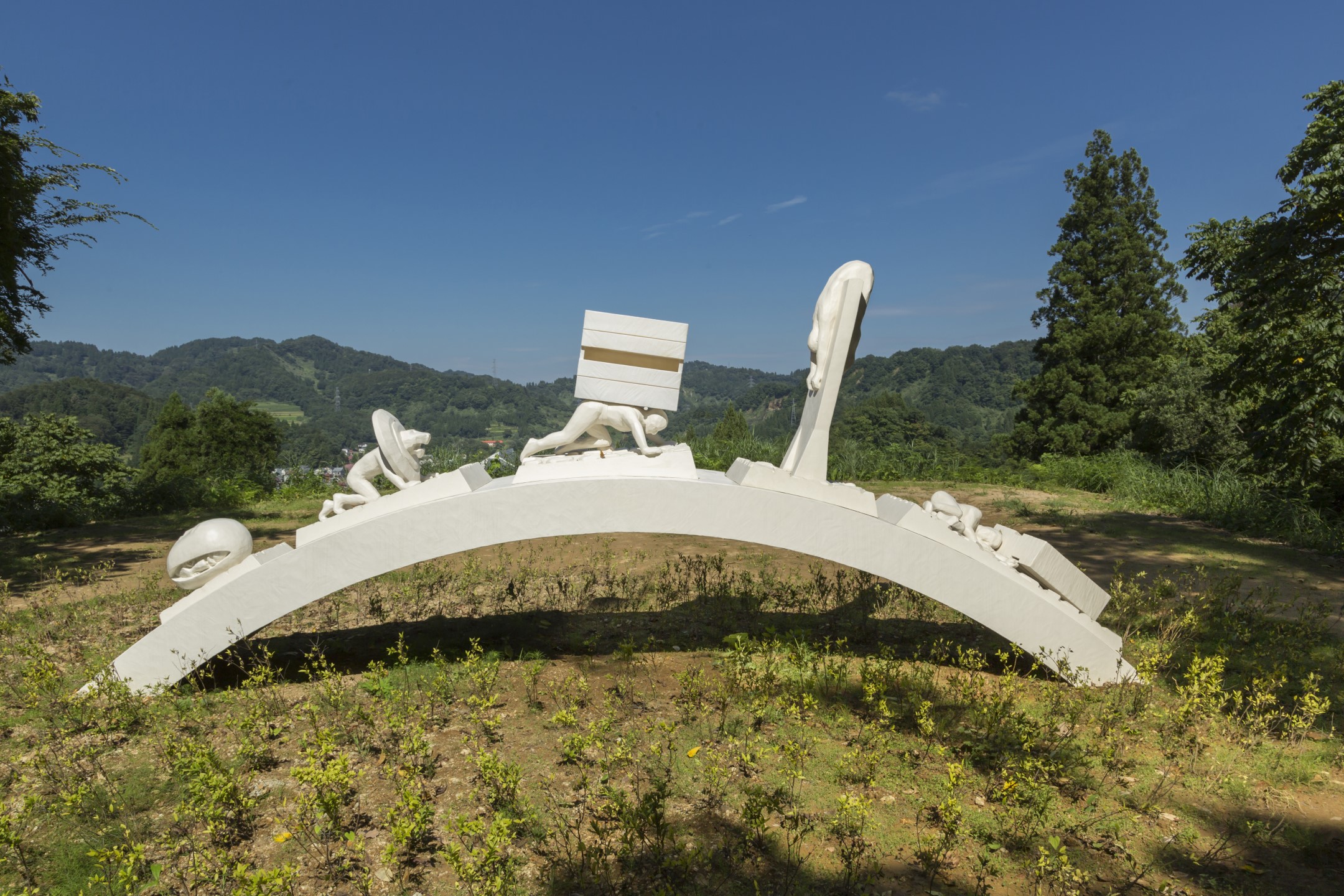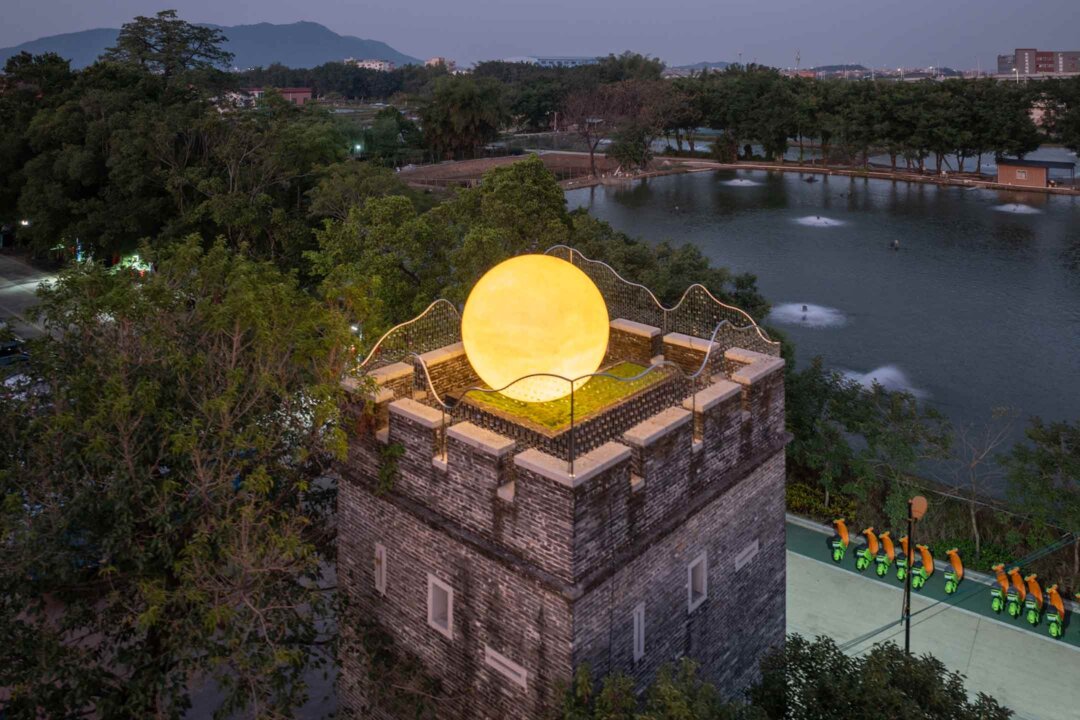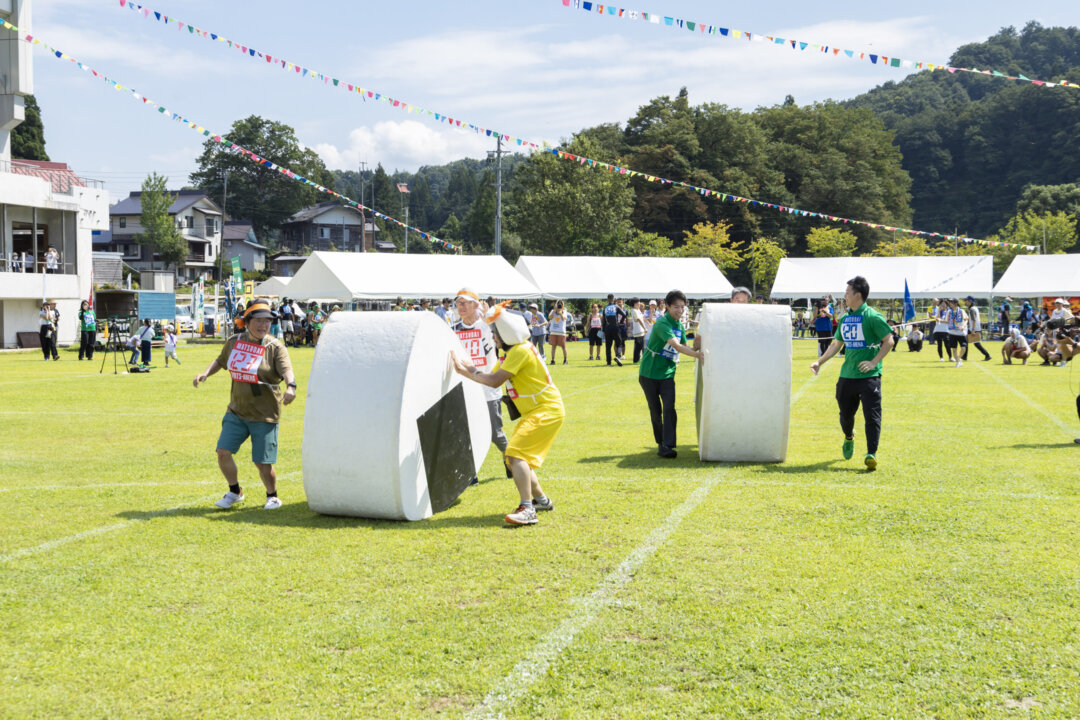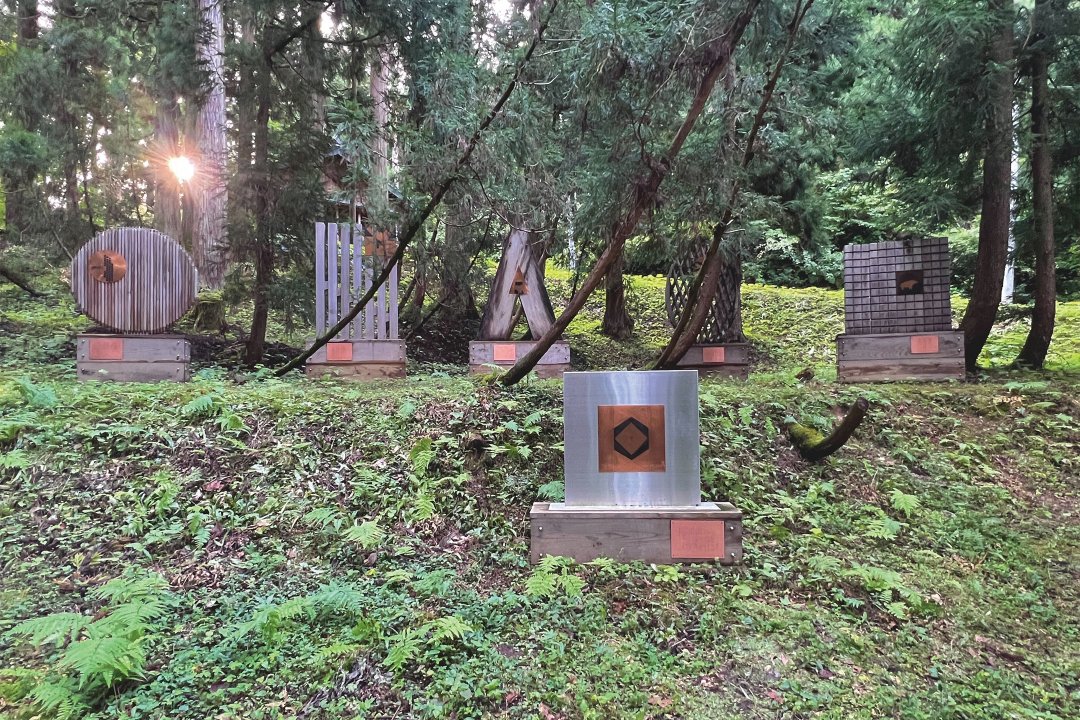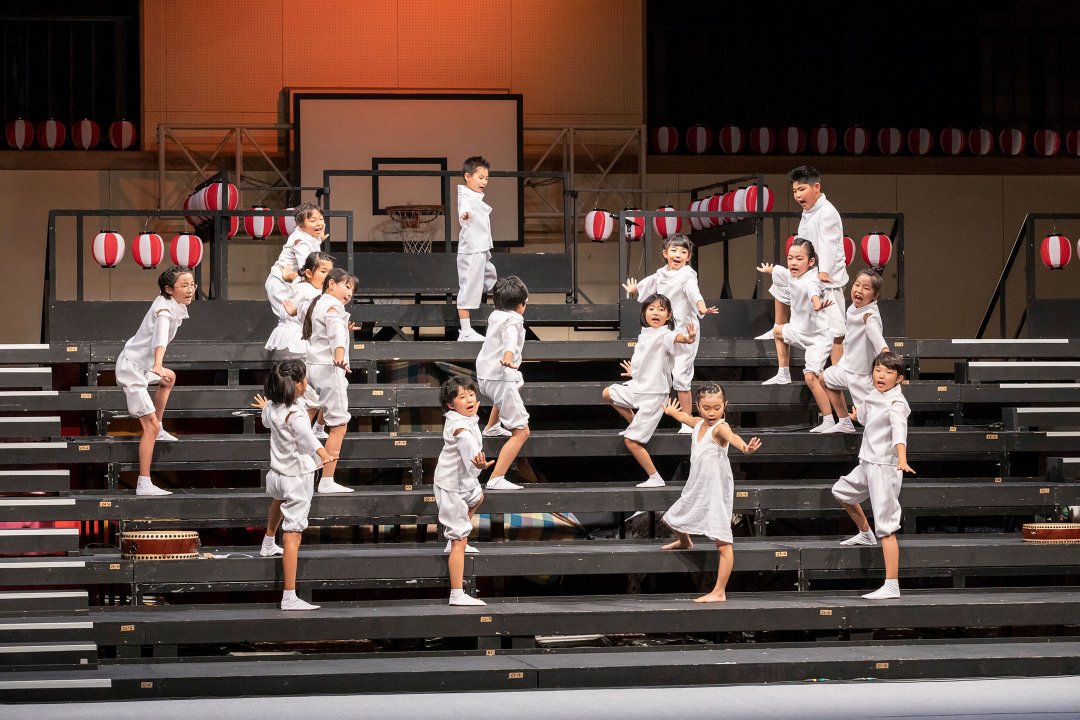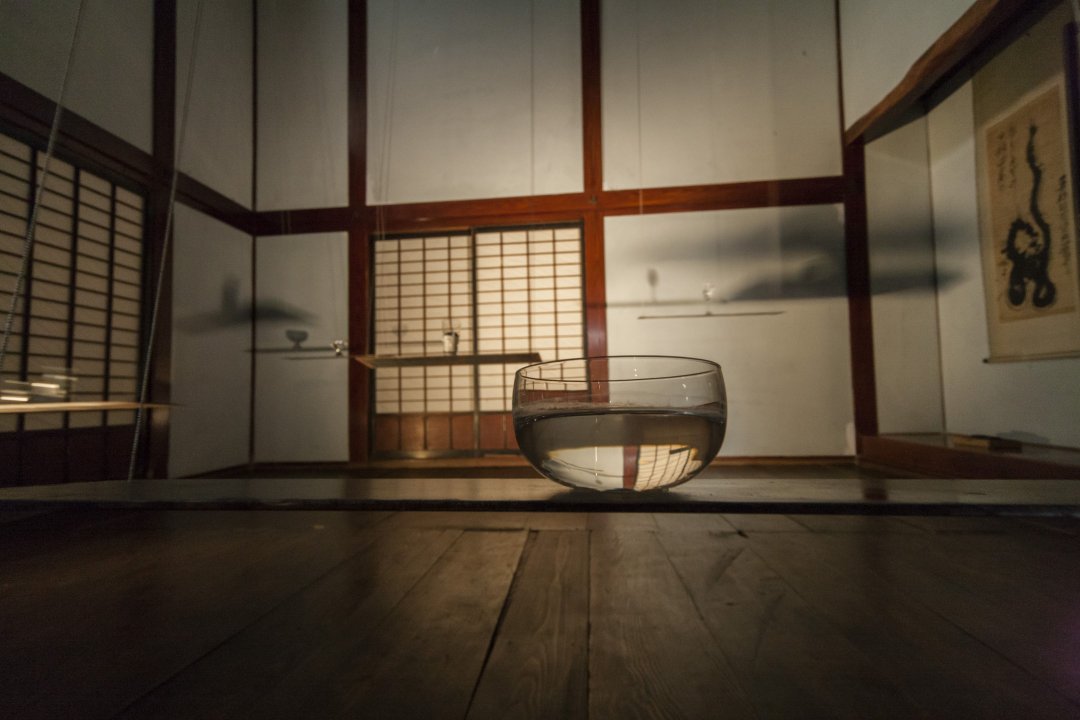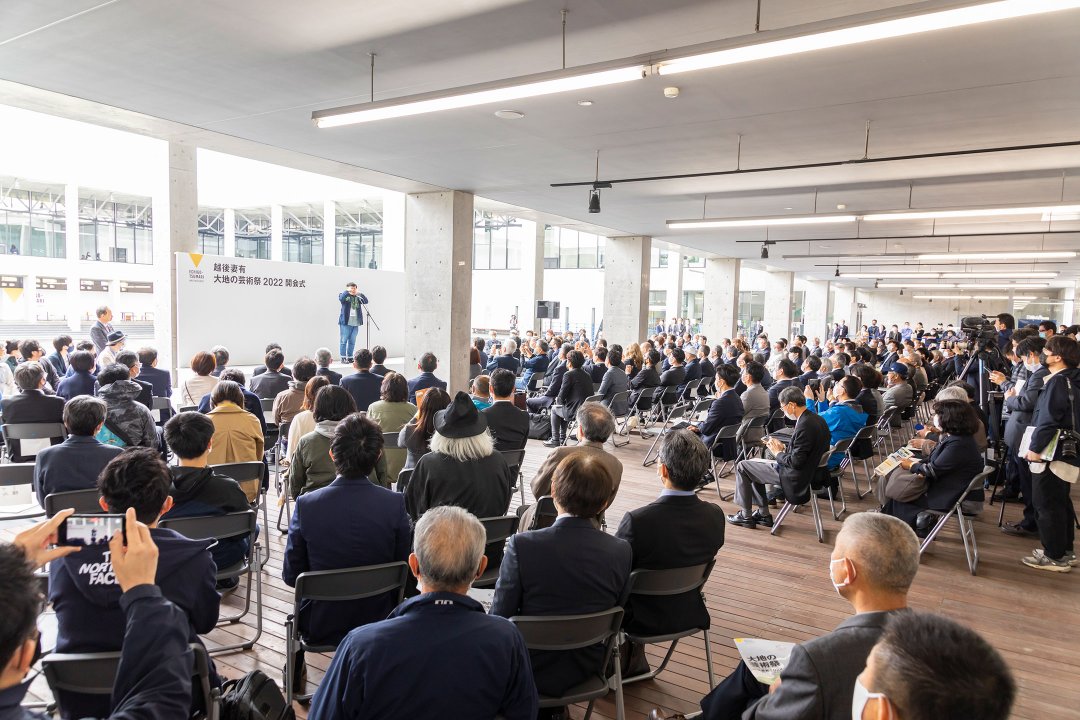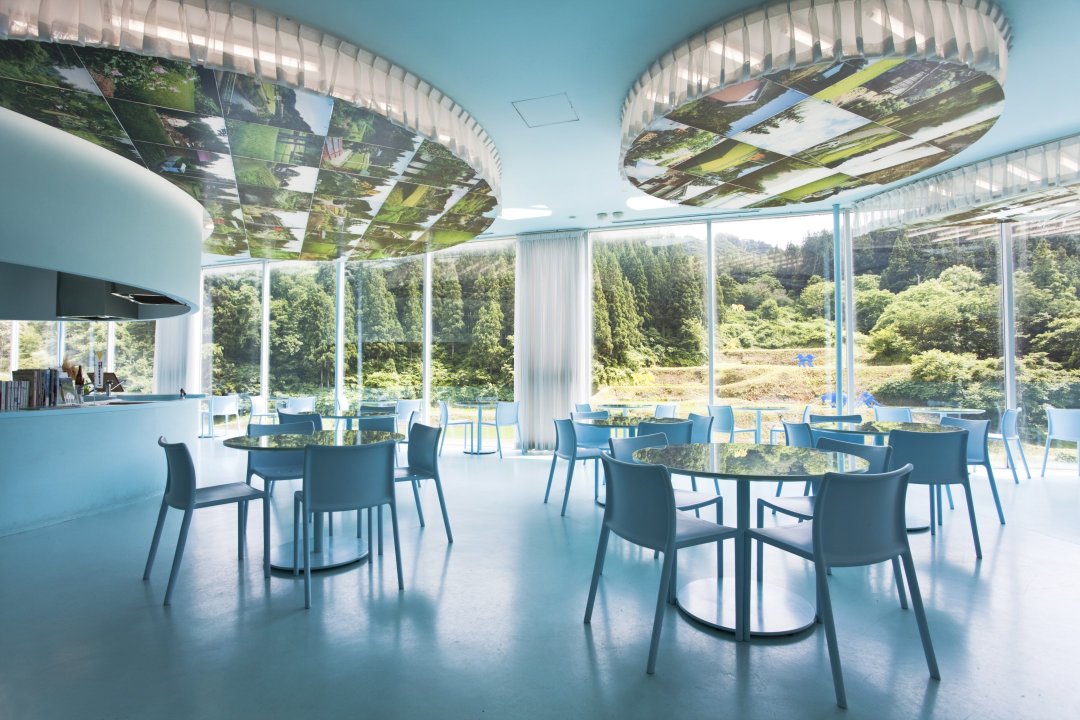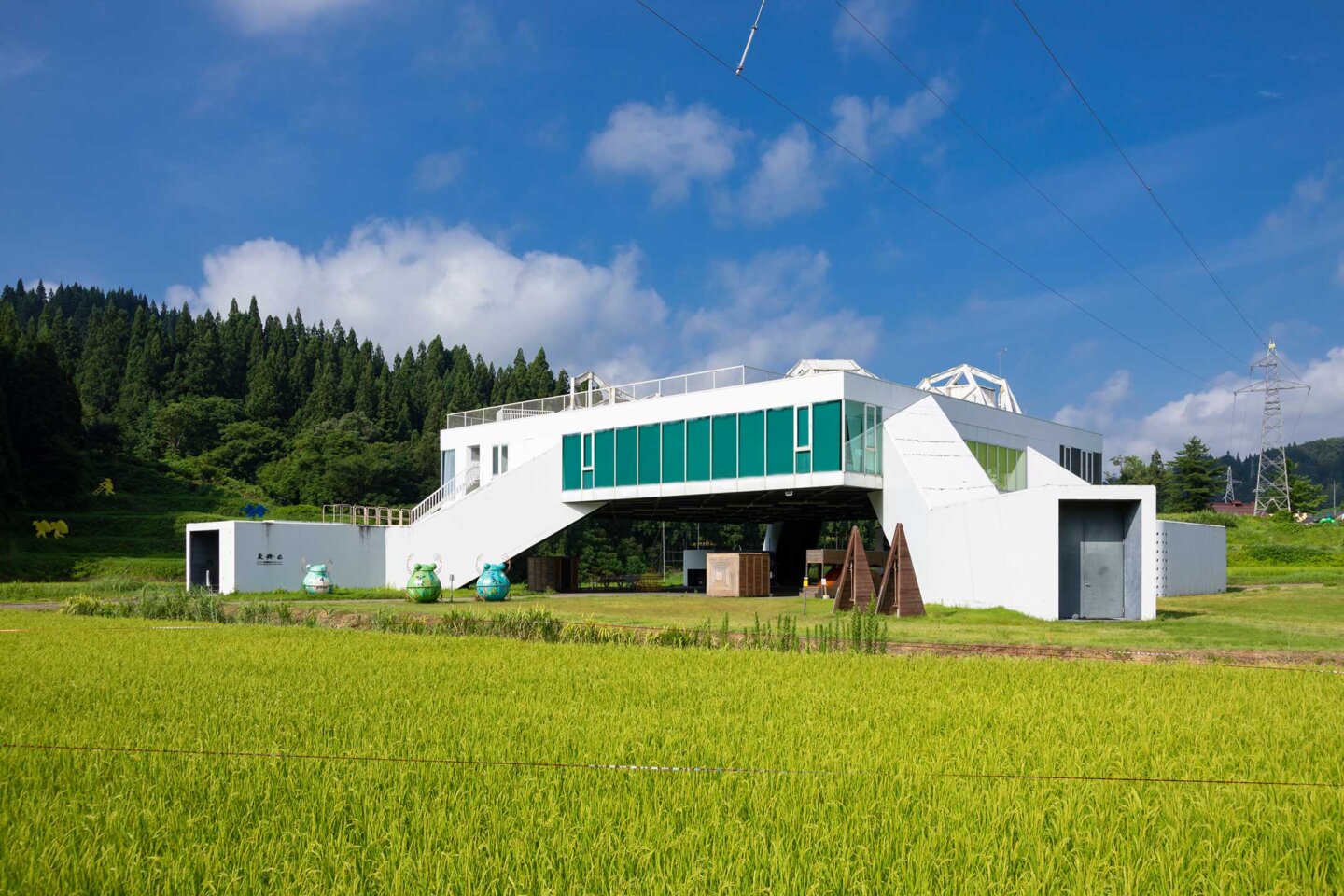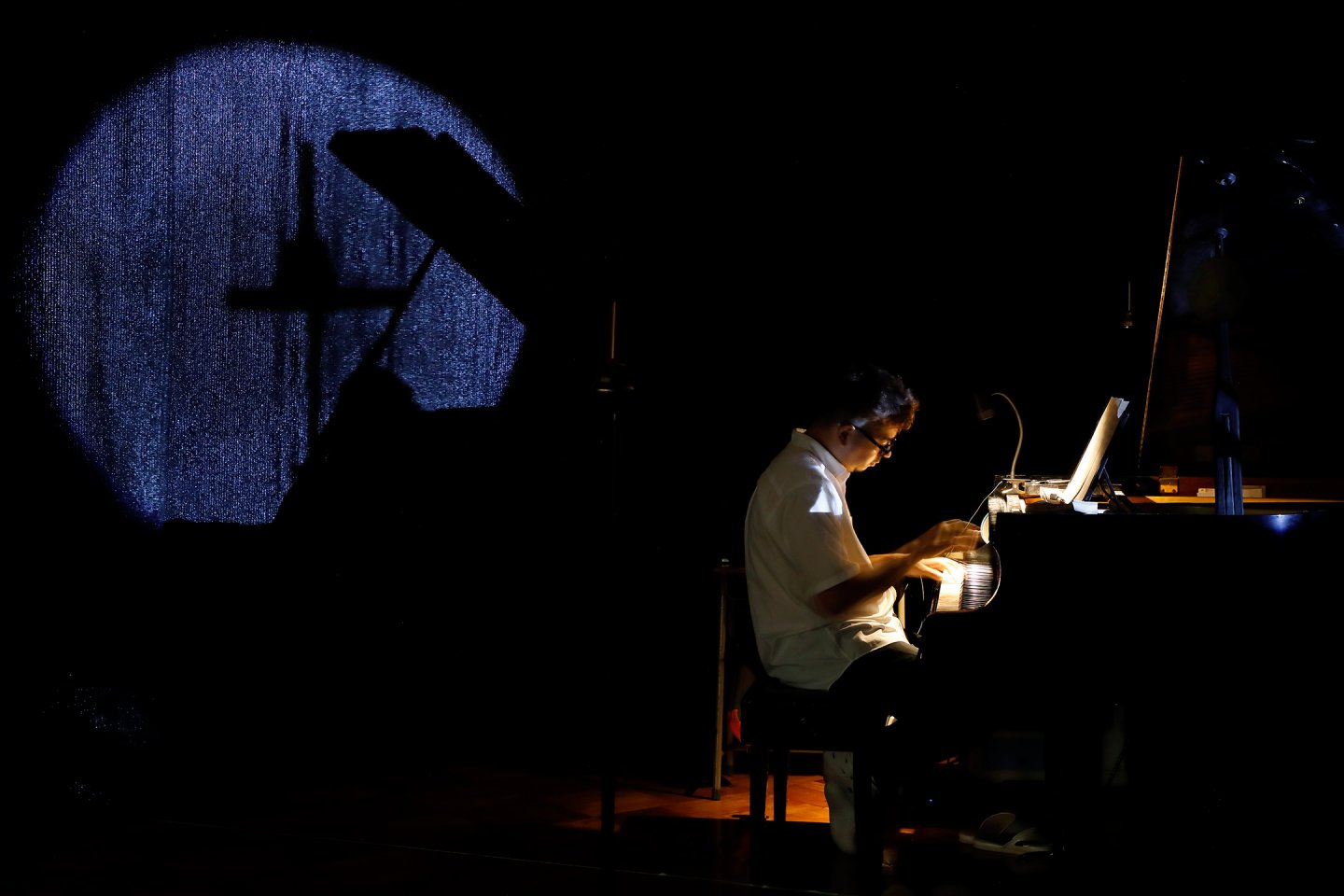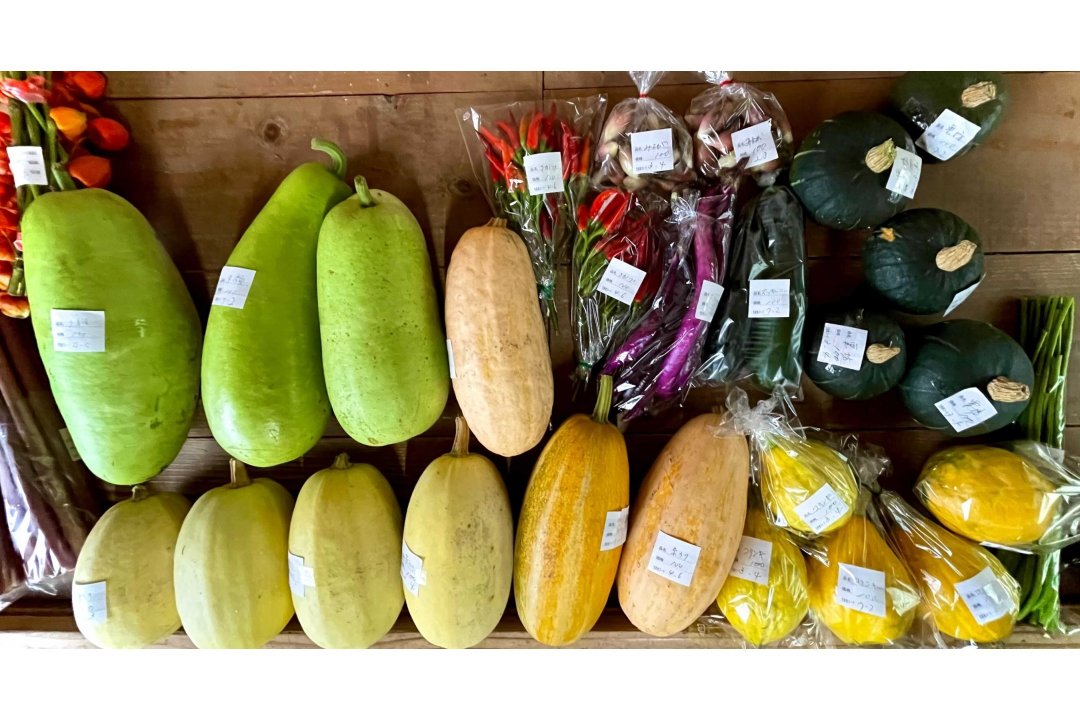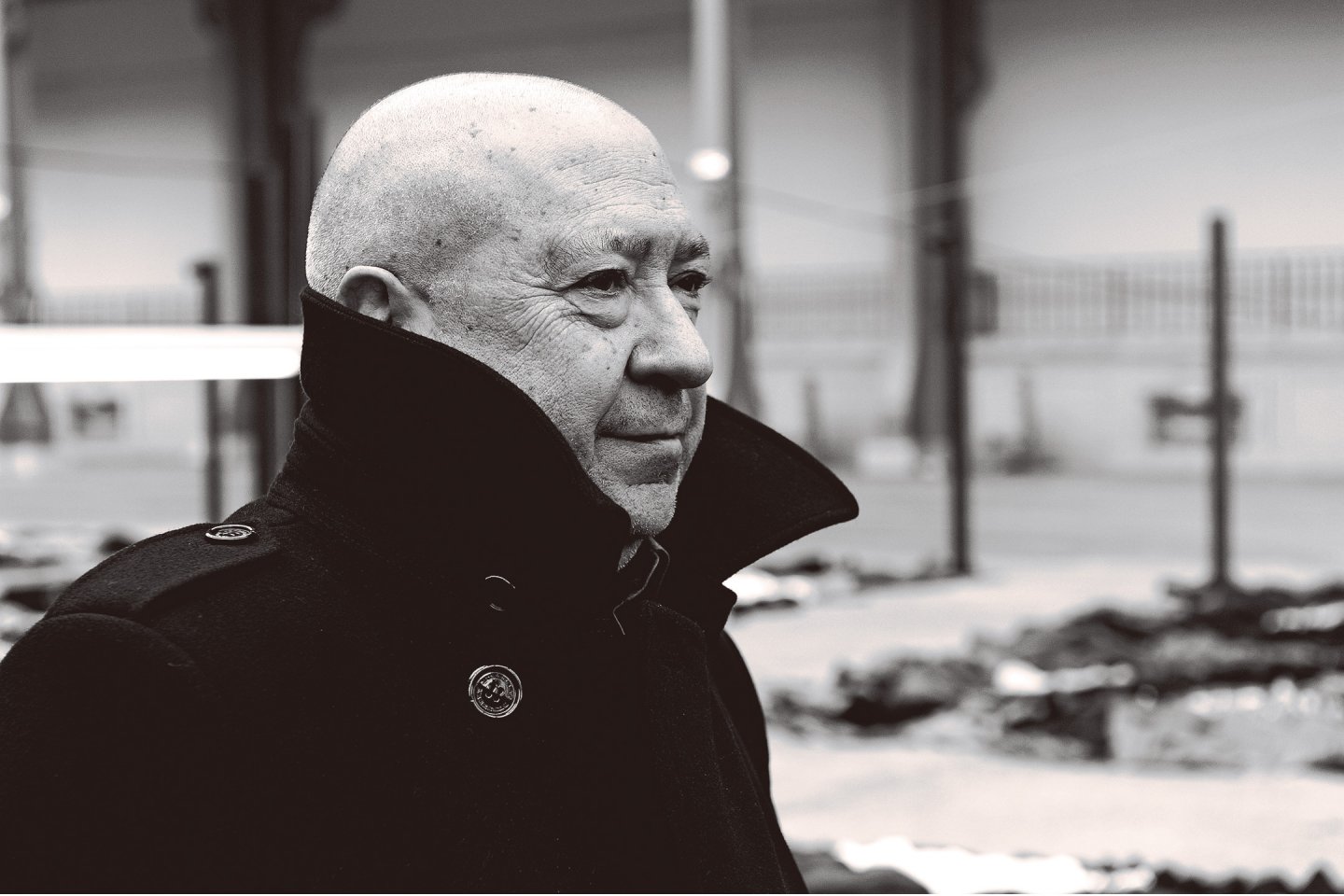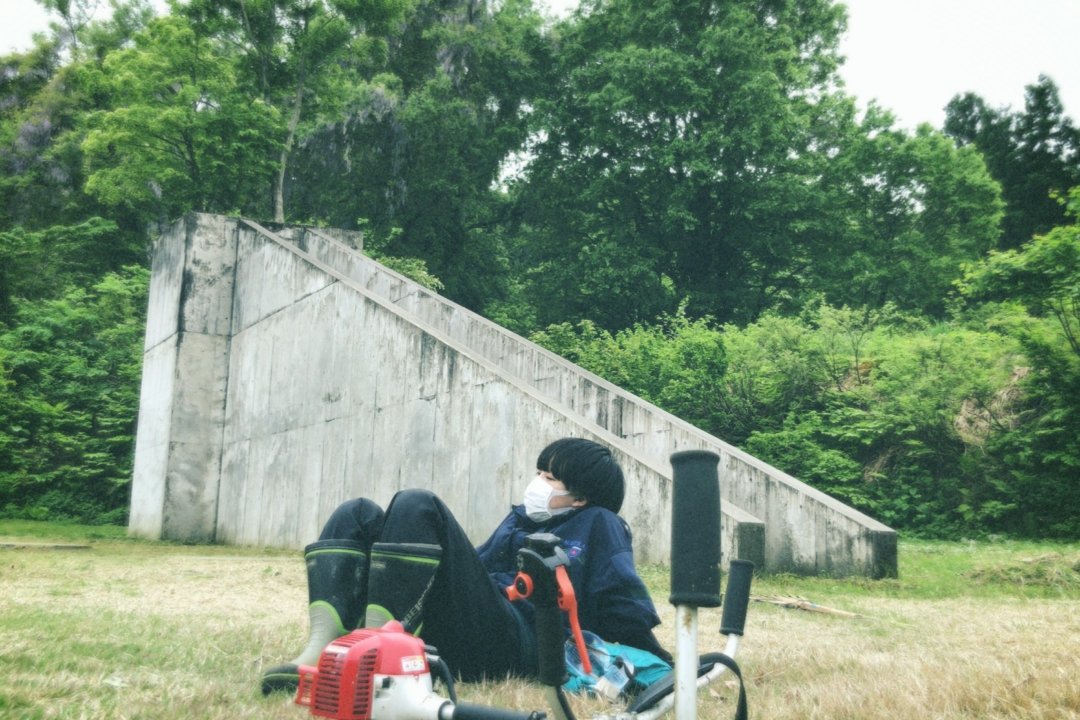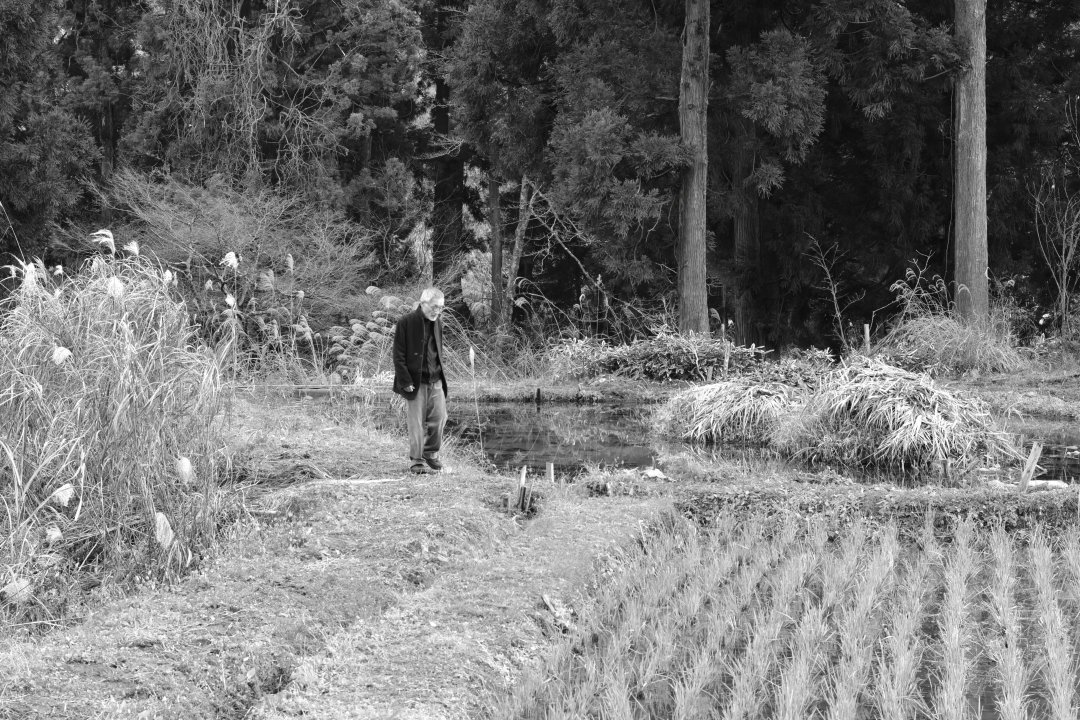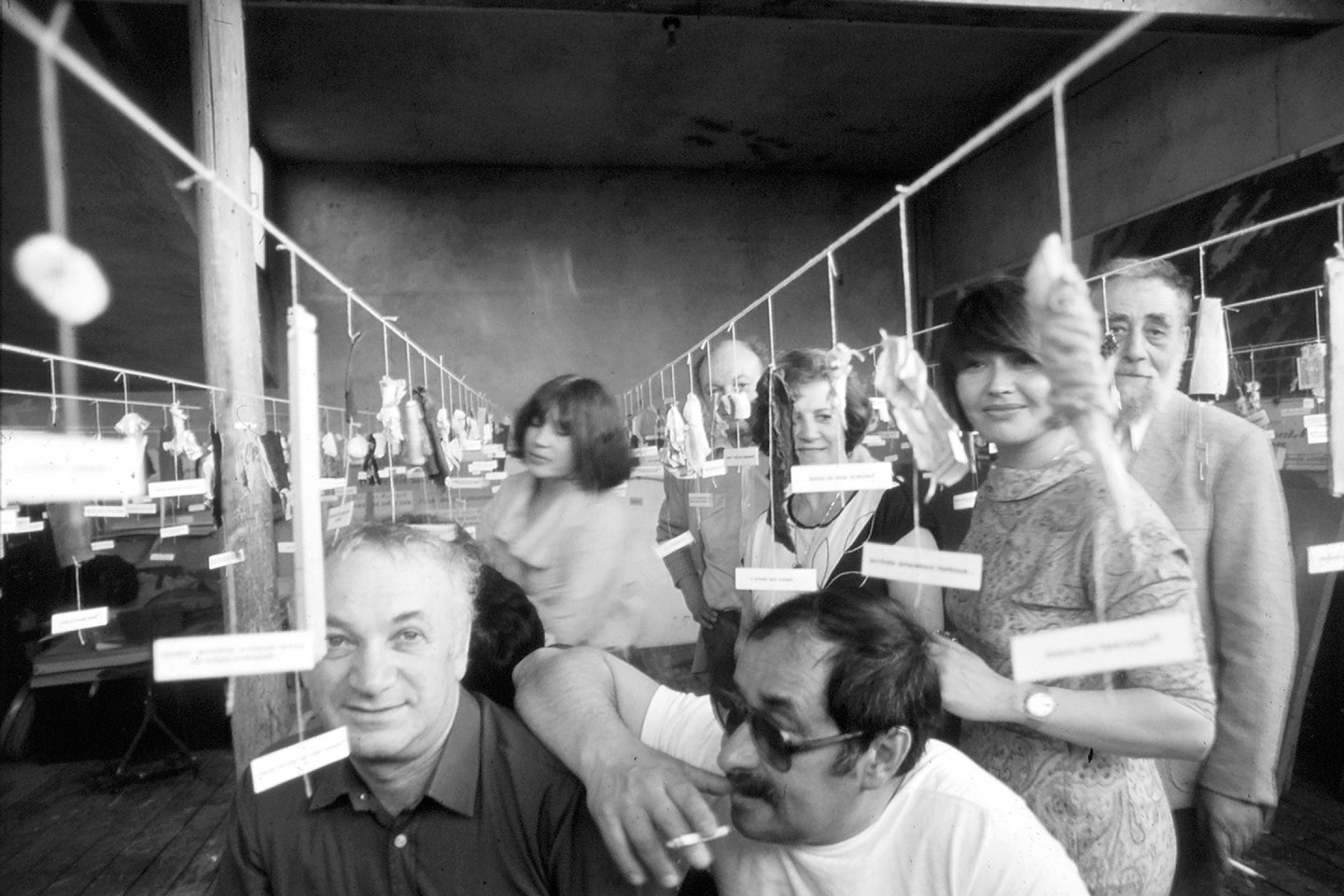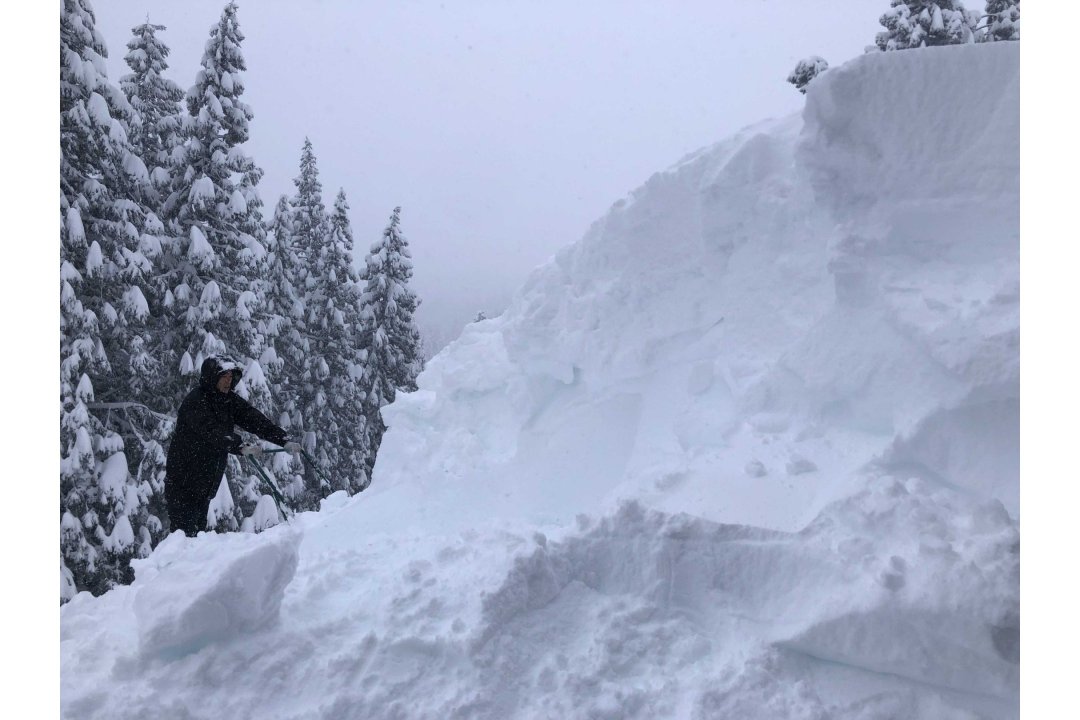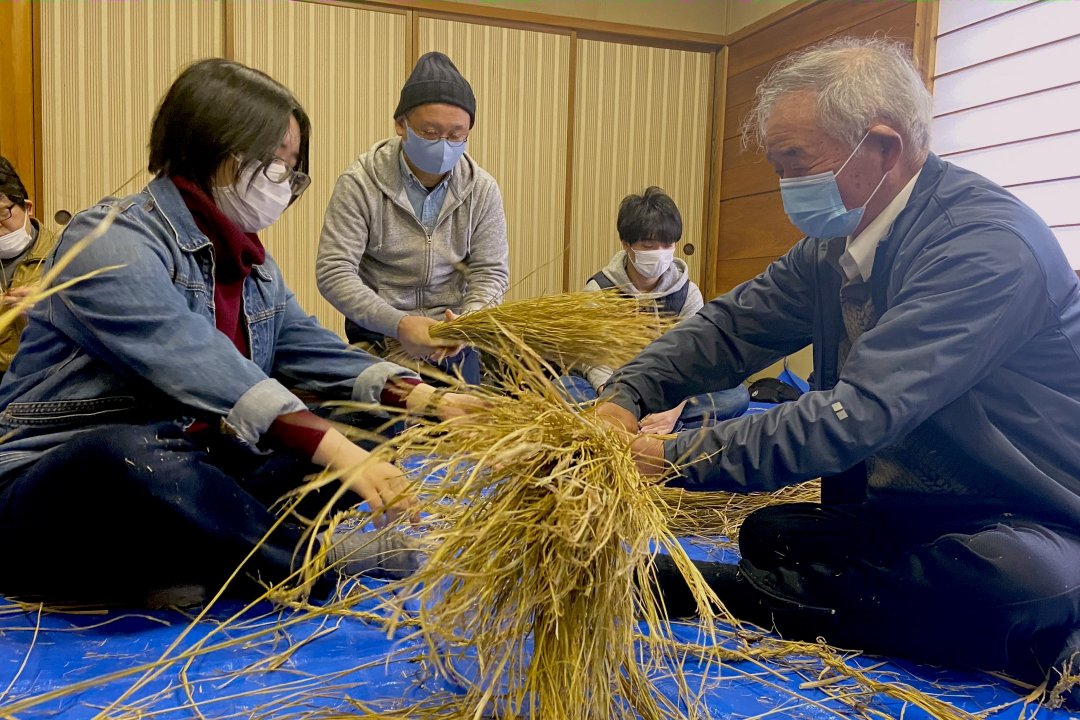Thinking 21st century art in the world from Niigata
Echigo-Tsumari Art Field - Official Web Magazine
Feature / Column by General Director – vol.5
From work to place - ETAT2021 sets sail for future
Fram Kitagawa, “Art from the Land” editor-in-chief / General Director, Echigo-Tsumari Art Triennale
It has been decided that the 8th iteration of ETAT will be held this summer while confronting the challenges related to COVID-19. About 20 years on since the first festival, KITAGAWA Fram, General Director of ETAT reviews the origin of the festival as he writes about his strong determinations to take the next step forward.
Editor: Uchida Shinichi, Miyahara Tomoyuki (CINRA.NET editor dept)
10 March 2021
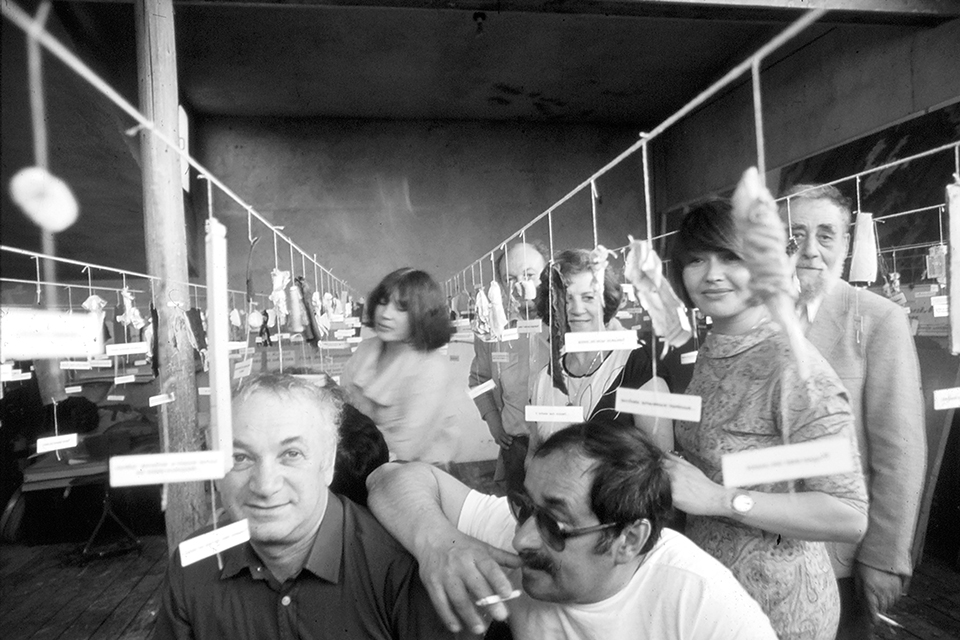
Closing day of the studio exhibition, Moscow, 1984 / Photo by Ilya Kabakov
What has sprouted after "cultivating" for over 20 years
It has been officially decided that ETAT2021 will be held from 25 July to 12 September 2021. ETAT2021 will be delivered under COVID plans following strict guidelines so that visitors, artists, supporters (kohebi members) and local people will be able to enjoy and stay safe.
This is the eighth iteration of the festival since the first one in 2000, I can feel that there is definitely something that this art festival has cultivated through continuation and development over the past two decades. On the other hand, the original aspiration to revitalise this depopulating and ageing region yet to be achieved – or it could be said that small sprouts which will become foundations to each area in the region have finally come out after all these years.
Taking such circumstance into an account, I am strongly conscious of “from work to place”. It is needless to say that artwork is one of the most important element of ETAT. Exploring artworks created in Echigo-Tsumari by artists from around the world and discover or recognise charms of the region and the way each village is in different seasons through encountering and experiencing artworks – this remains the core principle of the festival and close to 300 artworks including approximately 100 new ones will be presented across the region for this festival.
However, it is not just “installing” an artwork on a given site. What we value most is how we nurture events and foster connections that are brought by the artwork. In other words, “from work to place” could be described as an activity that helps grow above-mentioned “sprout”. For this festival, we will carefully review the roles of ten hub facilities and invest our energy in making respective place with some changes.
Making a place which nurtures the power to live even under difficult circumstances
Investing in facilities under the direction of “from work to place” doesn’t mean just replacing an existing “container” to bring a new look. What “a place” in this context means is where people live their lives and that is why I would like to make these places to be spaces and facilities which will help grow the power to live for this community through engaging many people.
For example, what we aim to achieve in Matsudai Joyama adjacent to Matsudai Nohbutai is to create a place where people can feel the life of nature and human being. Artworks presented outdoor in this area include “The Rice Field” by Ilya & Emilia Kabakov (*1) which has been admired since the 1st festival and “The Arch of Life”(*2) created in 2015 on top of the hill by them.
For this year’s festival, we will be presenting “Kabakov’s Dream”, the collections of eight artworks mainly presented in this area, by Ilya and Emilia Kabakov who have been walking alongside with the history of ETAT. This will be an attempt never been seen anywhere in the world.
Ilya Kabakov was long under the harsh circumstance during the oppression of the former Soviet union era when he was unable to present his works freely. However, as he never gave up and kept drawing his ideas, he later became an internationally recognised artist.
I regard “The Rice Field” is an artwork born out of a marriage between such experience of his own and the beautiful yet harsh land of Echigo-Tsumari. Moreover, I also feel something in common between the way he leads his life and the will of human being searching for a way forward in the current situation where we are no longer able to do in the way we used to do, as a result of the COVID-19 pandemic.
“16 Ropes” (*3), a pre-exhibition opened in March leading up to ETAT2021, is one of Kabakov’s masterpieces that he has repeatedly engaged with since 1984. Pieces of notes with conversations about everyday life such as nature, child, health, house chores and love are attached to corks and empty match boxes hanging on the ropes stretched above head. The artist describes these texts as “non-individualised speech which could belong to “each and every person”. In addition to these works, we will be presenting more of Kabakov’s works during the festival starting from the end of July such as “The Monument of Tolerance” and the model of “The Ship of Tolerance”, a patchwork of drawings of dreams by children that is turned into a sail.
Moreover, four artist groups from Japan and abroad will create their respective new artworks and project in the space of Matsudai Castle in Matsudai Joyama area.
*3:A concept drawing of “16 Ropes”, 1995 by Ilya and Emilia Kabakov
An image of a new artwork by Nicolas Darrot
Seeking for an organic connection
Echigo-Tsumari Satoyama Museum of Contemporary Art, KINARE located in Tokamachi is aspired to be an art gallery representing the region and improve its role to welcome visitors from both within and outside the region. During ETAT2021, it will host an installation by NAWA Kohei and a unique moving sculpture by Nicolas Darrot. At the outdoor space of the museum, an artwork of fog by NAKAYA Fujiko will appear in the well-recognised space of “Palimpsest: pond of sky” (*4) by Leandro Erlich while ASAI Yusuke will present a large-scale mural on the outer wall of the building.
Through a network that ETAT has built over years by inviting artists from Russia as well as former Soviet era, a special exhibition featuring the Pushkin State Museum of Fine Arts will be held at a new exhibition space. In addition to the exhibition, we will also continue to work on various projects with partners including establishing a community centre with Ryohin Keikaku Co., Ltd. as well as introducing design by ETAT related artists to a rice package in collaboration with Oisix Ra Daichi Inc. Opening this place with attractive artworks and keep cultivating – it is this desire which drives us to work on preparation for the festival.
As for Sansho House, an closed wooden school building renovated into an accommodation in Matsunoyama area, will be a place where various encounters happen not only for guests and local staff members but also for artists and supporters. It will be a place beyond a conventional framework of a facility to nurture an organic connection.
For instance, Katakuri House, a renovation of a closed school located in Akiyamago, an unexplored area on the border of Nagano prefecture, will promote the charm of Akiyamago with strong reminiscence of old life represented by stone-wall terraced rice field, Matagi culture, the original topography and overwhelming landscape in snows.
The activities in big metropolis include the exchange with people who organise “scarecrow competition” in Fukagawa, Tokyo and the operation of FC Echigo-Tsumari in Matsudai area where female football players practice and play football while engage with farming in the region.
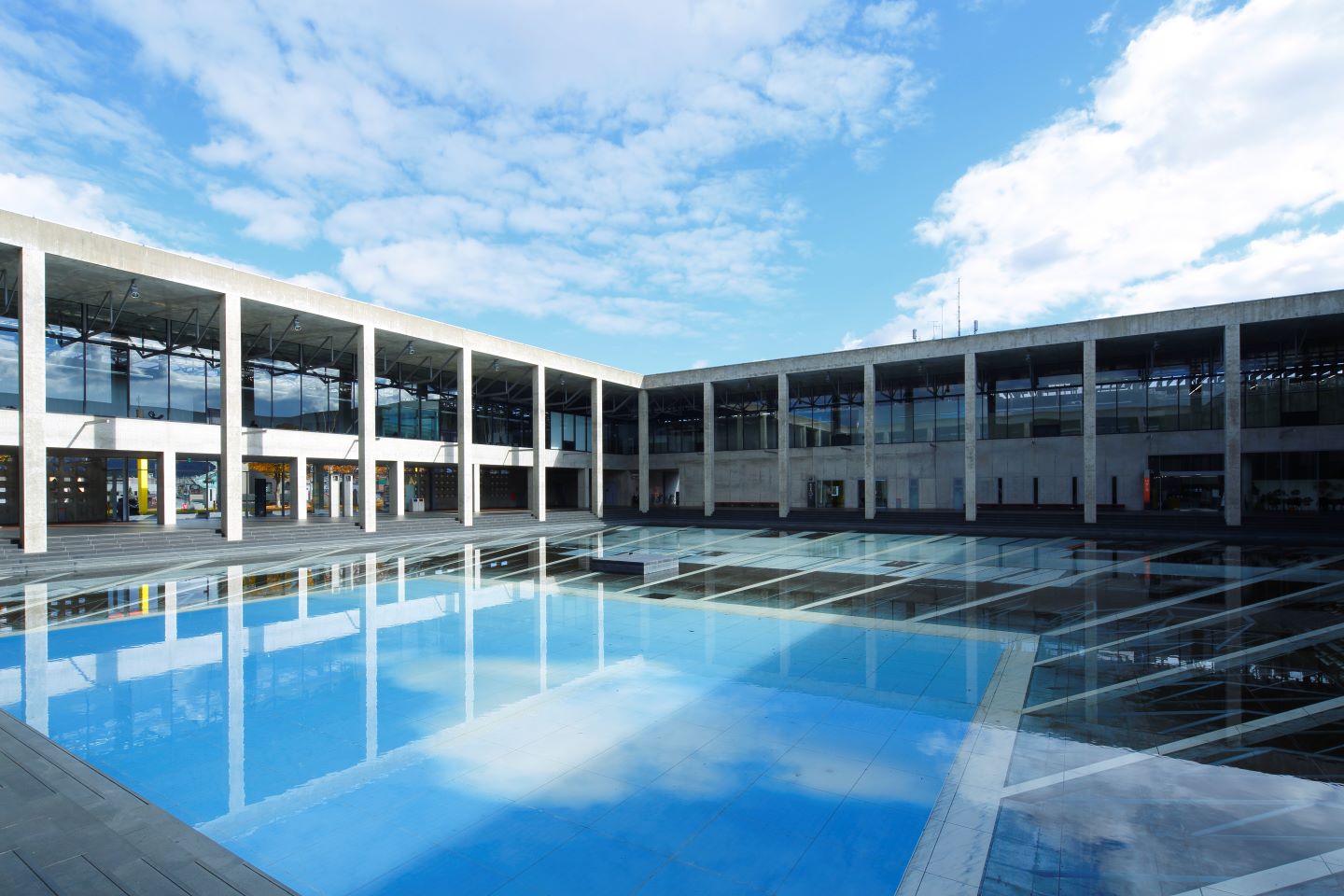
*4: “Palimpsest: pond of sky” by Leandro Erlich, 2018 / Photo by KIOKU Keizo
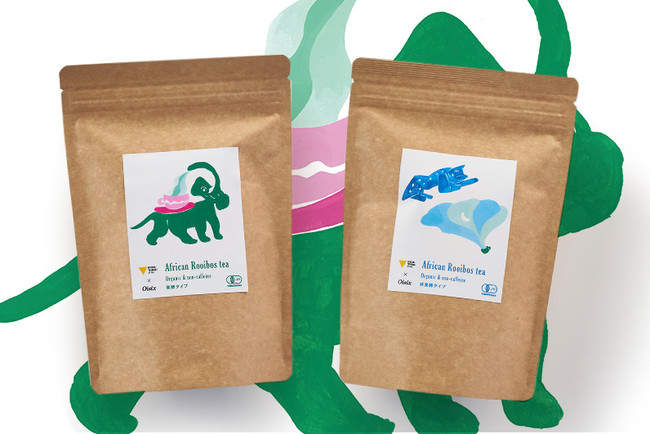
Rooibos tea – the third product developed in collaboration with Oisix Ra Daichi Inc. (package design by HARA Yu)
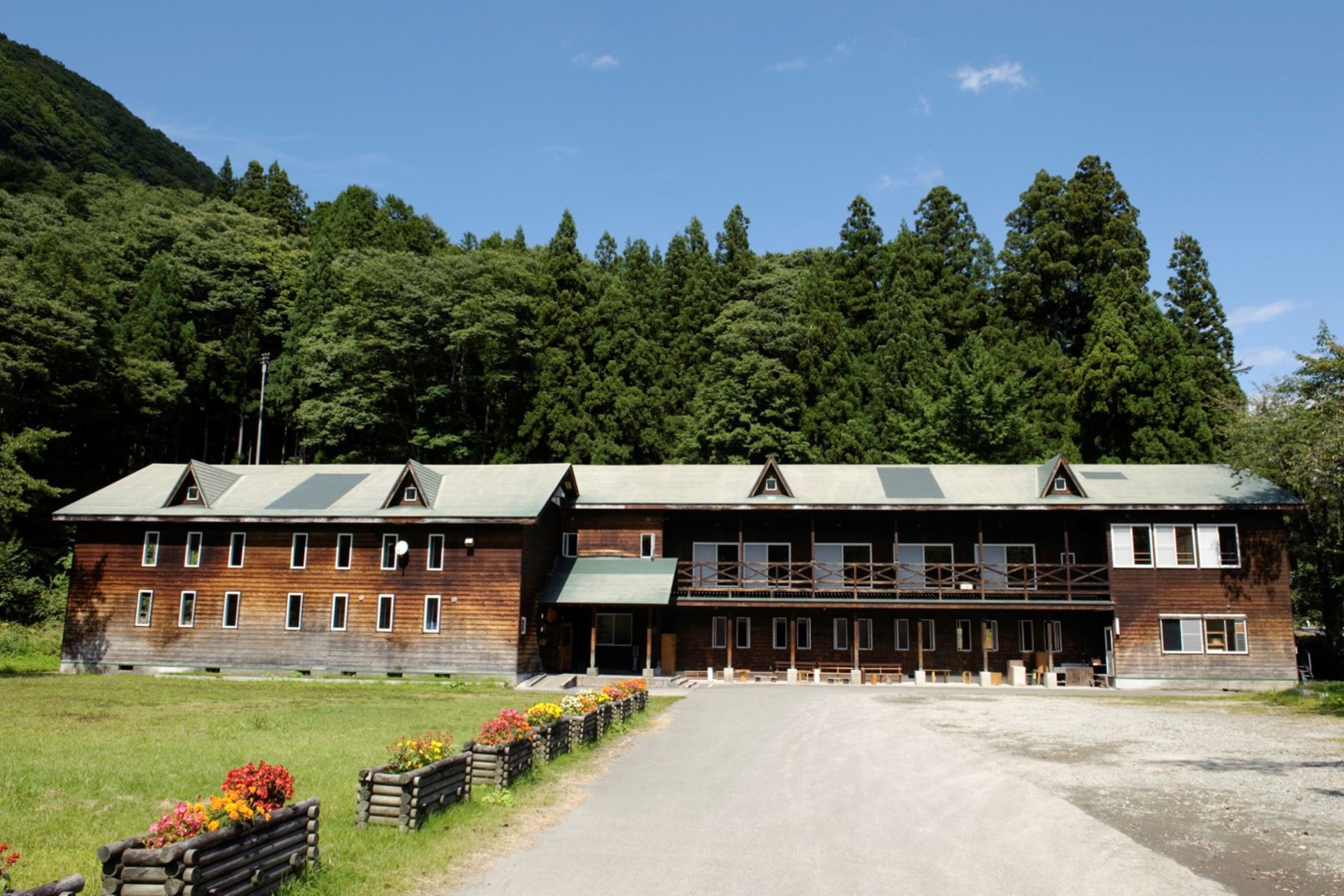
秋山郷結東温泉 かたくりの宿
Having said that, artworks such as “The Last Class” by Christian Boltanski and Jean Kalman which appreciate minimum interventions in response to artists’ desire and rather values changes occur in time are distinctive places to ETAT. Boltanski will be returning to ETAT2021 with his new artwork.
Food, performing arts as well as guided tours visiting artworks across the region form a fundamental element of nurturing such “places” of ETAT. While we have to admit that how much we will be able to deliver these in the current circumstances (under COVID-19) is in question, we will continue our effort to make these happen as we set out safe environment.
We feel strongly supported as we see artists filled with enthusiasm under the current circumstance as well as hear the voice of many people saying “we would like to visit Echigo-Tsumari again”. For local people, we will do our best to bring the joy of encounters with people in this place as well as to realise a safe environment to welcome visitors from outside.
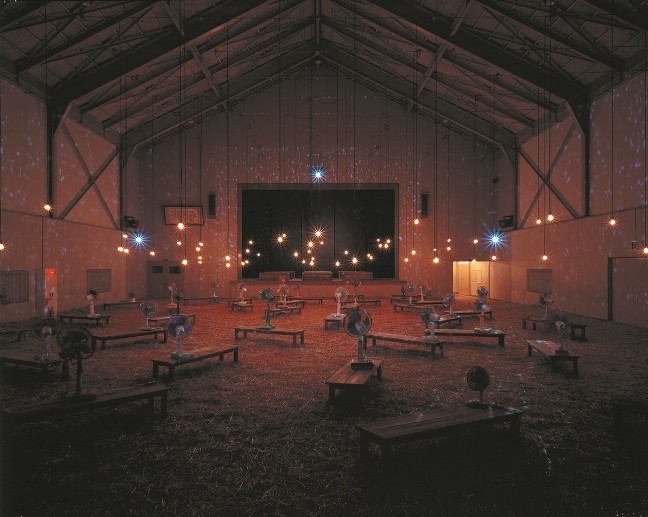
“The Last Class” by Christian Boltanski and Jean Kalman, 2006, photo by T.Kuratani
To close, I would like to talk about a sports day which was once frequently seen at local schools in Niigata as one of my favourite places. It was not just for children but also for everyone in different ages. Fathers and mothers worked hard in the early morning and everyone was assigned an appropriate role to play.
There were people who directed and managed an overall event, who took up all the hard work, and who set up a flag on the ground without difficulties. Despite occasional hiccups, I thought it was such a wonderful place as everyone had “something to do”. I do hope that ETAT will become such a place one day.
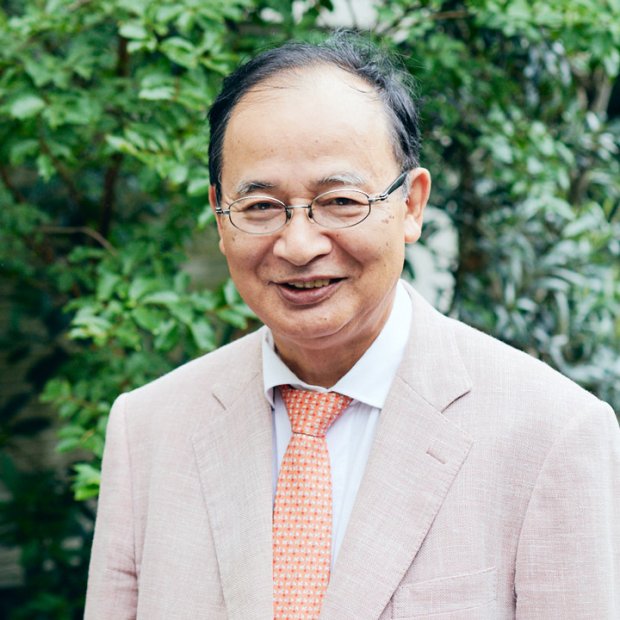
Profile
KITAGAWA Fram
“Art from the Land” editor-in-chief / General Director, Echigo-Tsumari Art Triennale
Editor-in-chief “Art from the Land” / General Director, Echigo-Tsumari Art Triennale An art director, born in 1946 in Takada-city (presently called Joetsu-city) in Niigata. He has been engaged with Echigo-Tsumari Art Triennale as its General Director, launched in 2000.
Articles
Latest Articles
Stay connected with the ETAT official social media to receive the latest news and event information, and the many seasonal faces of Echigo-Tsumari as well as new issue of the ETAT official media, “Art from the Land”.





